On a recent trip to South Africa I had an opportunity to check out the beekeeping situation there. The Honeybadger Beekeeping Equipment provider in Pretoria is an outfit that keeps and sells bees, sells honey and beekeeping equipment and also provides beekeeping training to locals.
Perhaps the biggest difference between what we beekeepers are used to here in North America and what is found in Africa is the honeybee itself. Here at home in the USA, the honeybee is a non-native insect originally brought over by the early European settlers. Our Western honeybee (apis melefera) is a good honey producer and also a reasonably gentle bee that is not difficult to work with. The honeybee in Southern Africa a sub-species of the Western honeybee (Apis mellifera scutellata) is also a good honey producer, but is also far more aggressive strain of honeybee. The African honeybee attacks with little provocation and in numbers that are sufficient to seriously inflict some fairly severe (potentially fatal) damage to the creature they are targeting. You may have read about “Africanized” bees (or “killer bees” as the media prefers to dub them) here in the USA. African bees were inadvertently introduced into the wild on the S. American continent by an entomologist in the 1950’s. Since then they have thrived and over time migrated north, eventually reaching the North American continent. Since their arrival these bees have interbred with our Western (or European) honeybees. Strains of these hybrid bees with African traits are now found in some of the Southern states here in the USA.

The S. African beekeeper at the Honeybadger that hosted our visit. Unfortunately I do not remember his name.
The S. African winter is milder than what many of us experience here in the northern regions of the USA resembling perhaps the typical winter in Florida or Arizona. Hence, beekeepers there experience multiple honey flows, yielding we were told average production per colony at around 175 lbs annually. A key honey producing plant is Aloe. The bees become particularly aggressive when this particular plant begins to bloom. While many of us work bees here in Michigan on hot summer days in our t-shirts, in S. Africa beekeepers typically wear multiple layered beesuits and thick gloves. The beekeeper we visited said when you drive into the apiary the bees will start hammering your vehicle immediately and you have to be fully clothed in your protective gear before you exit the vehicle.
The Honeybadger folks do not buy package bees like we do here in the northern states to replenish our apiaries after winter loss. Instead, they take advantage of the African bees strong tendency to swarm. The Honeybadger places around 400 swarm traps around the country side in the Spring when colonies are building up and swarming, and within three weeks most of these traps will house a swarm. Once the honey flow begins they will do 3-way splits on the colonies. The colonies build up very rapidly and are used to secure a honey crop and eventually are sold to hobby beekeepers, who also are able to take courses and receive mentoring by the Honeybadger folks.
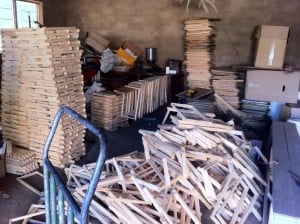
Beekeeping equipment is imported from a European manufacturer and assembled onsite by Honeybadger employees.
In terms of parasites, in addition to the usual culprits that we are accustomed to (e.g. the Varroa mite, American Foulbrood, etc.) the S. African beekeeper also has to deal with what is known as the Cape Bee. The Cape Bee (Apis mellifera capensis) is unique in that its workers can actually be fertile and lay eggs that develop into clones of themselves. In addition, these workers emit a pheromone that is practically equivalent to the pheromone emitted by an Apis mellifera scutellata queen. When African bees are kept where Cape bees are present, the Cape bee workers will enter an Africanized colony and become parasitic, laying clones of themselves that also lay. Soon the original colony is overwhelmed with these parasites. In some cases the bees will even kill their own African queen due to the presence of these parasitic bees emitting the same pheromone.
We were informed that there is essentially very little in the way of beekeeping equipment manufacturing in S. Africa. Honeybadger imports equipment from European manufacturers and assembles and resells it to S. African beekeepers. We found the prices of equipment to be considerably higher than what we typically find here in the USA. This was especially the case with the stainless steel processing equipment.
In the S. African supermarkets the situation is very similar to what we find here in the USA. Along with the locally produced honey (that sells at a higher premium) there are plenty of imported blend honeys from Brazil, Argentina, etc.
While we went out back to their local apiary and viewed colonies at a distance we unfortunately did not have the opportunity to actually open the hives and take a look. Our visit was rather late in the day and our host did offer us that opportunity if we would return the next morning. However, we were officially in S. Africa for church missions related work and our agenda prevented us from taking him up on this. This is also in keeping with my travel philosophy of always leaving incentive to take a return trip to countries you’ve enjoyed visiting!
S. Africa is a beautiful country, and well worth visiting. We are most grateful to the folks at the Honeybadger who took the time to visit with us and help us better understand the beekeeping situation there. If you’re interested you can visit their website online at: http://honeybadger.co.za/
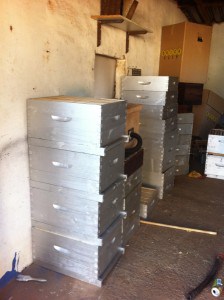
Assembled and freshly painted hive bodies. These will be filled with bees shortly as the South African swarming season will soon be upon them.
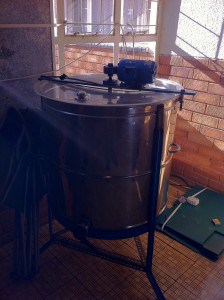
Beekeeping equipment (all imported) seemed quite pricey in South Africa. The stainless steel processing equipment in particular was very expensive.

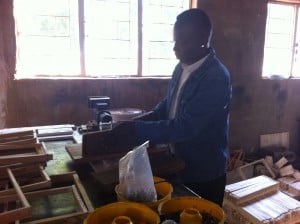

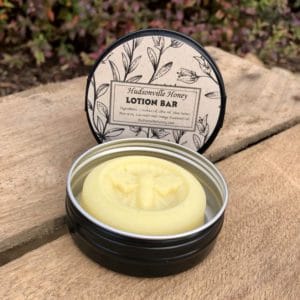
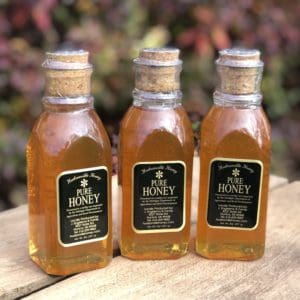
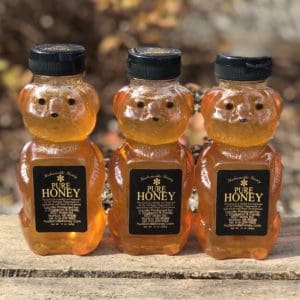
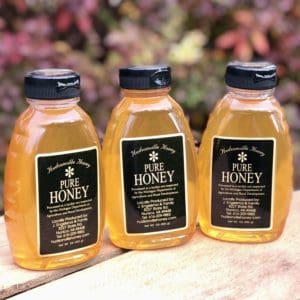
i would luke some bee keeping equipment in botswana. it is as follows, its for government tender;
Items Description Specification Bidders Offer Specification Supplier
1. Bee Hive Complete wooden hive assembled and ready for bees; Consists of; Floorboard, brood chamber with 10 frames, wired and waxed, inner cover, hardboard lid aluminium cover and 1 hive tie, all components treated with queen excluder.
Brood chamber and super chamber; length; 50.8cm
Width;40.6cm
Depth;24.1cm
2 Trap hive (nuclei hives) Trap box [wood], 5 frames, wired and waxed.
Size; 47.6 by 23.3cm
3 Hive stands Hive stand should be 1m tall and made of steel, angle iron of 50mm by 50mm by 5mm and painted (white preferably). It should be able to seat the Lang troth hive
4 Bee smoker Below smoker (large) should be made of stainless steel and leather/ leather look plastic with heat shield and hinged type lid
5 Hive tool Hive tool made of steel
6 Bee gloves Bee gloves- Red/ yellow PVC with material arms
7 Bee Brush Bee brush, medium, wooden handle with soft brittles
8 Uncapping knife Uncapping knife, electric, built in thermostat
9 Bee overall Bee overall with veil- 60% cotton and 40% nylon with a zip and elastic and elasticated cuff with hive tool pocket. The veil should have an ultra violet resistant net in front size ; 36 – 42
10 Bee overall Bee overall with veil- 60% cotton and 40% nylon with a zip and elastic, elasticated cuff with hive tool pocket. The veil should have an ultra violet resistant net in front size 44 – 46.
11 Bee overall Bee overall with veil – 60% cotton and 40% – nylon with a zip and elastic, elasticated cuff with hive tool pocket. The veil should have an ultra violet resistant net in front size ; 48 – 50.
12 Feeding frames Feeding frames/blocks for the Langstroth hive.
13 Honey extractor Extractor – 20 frame, electric (stainless steel).
14 Honey press Honey press (stainless steel)
15 Honey filter Honey filter conical fir 20 litres bucket
16 Honey thermometer Honey thermometer with plastic guard
17 Honey setting tank Setting tank 50kg stainless steel with perfection gate
18 Heater base thermostat Heater base with thermostatic control for 50 + 100kg tank
19 Honey filling machine Fully automatic jar filling machine (30g – 2kg)
20 Scale Electronic scale 50kg
21 Table/canteen unit Table/canteen unit stainless steel (2m by 1m by 1.5m) supplier has to mount it to the wall and floor using appropriate raw bolts
22 Stainless double sink Stainless steel wash basin (Standard double sink)
23 Honey jars 24 by 500g round honey jars, Pre-packed plastics
24 Honey bottles 24 by 500g squeeze honey bottles, Pre-packed plastic
25 Security fence Security fence (1.8m height) diamond meshed wire 1.2 by 50 2.5mm with 6 fence posts 2.4 by 76 by 460 by 1.6MD, 15 fence stays 2.4m by 50m, 40 fence standard Y 2.4m by 450mm, 1 fence gate 1.8 by 4.2 by 460DBL, 80 fence droppers 1.8m, fence wire galvanised 4mm by 50kg, fence wire barb 35kg, fence wire galvanised 2mm 5kg, bolt and nut 20 by 100kg and cement (7 by PPC 50kg 32.5N)
we can supply you with all modern bee keeping equipment including training. please visit our web site for more information.
Ernest
please sms me ur mobile number on one of the following numbers as i would love to get some equipment from you. will be coming to south africa on thursday this week.
my numbers are 00267 73 66 83 65 and 00267 71 91 58 14.
thanks
I am looking for honey filling equipment, kindly send me a catalogue with prices. do you have an urgent in Zimbabwe?
I am looking for 5 component bee sieves
Dear Sir or Madam,
Gald to greet you here.
This is Miss Cherry from Chinese Wang’s bee. This morning, when i browsed the webpages, and then i saw your company’s profile. Your rich experiences in bee industry are very interesting.
I am a bee industry person too, and our company have been in this industry for more than 30 years. We are the first one who manufacture bee drugs against varroa mites of bees in China , and until now we have developed to manufacture bee drugs, produce most kinds of bee tools and supply bee products together.
We would like to make a big progress with you in bee industry together.
Could we send our bee drugs and beekeeping equipments manual for your further reference?
My skype is yangu110, if you could , thank you for adding me.
Looking forward to hearing from you
Good luck
Yours sincerely
Cherry
Dear Mr Sir or Madam,
Gald to greet you here.
This is Miss Cherry from Chinese Wang’s bee. This morning, when i browsed the webpages, and then i saw your company’s profile. Your rich experiences in bee industry are very interesting.
I am a bee industry person too, and our company have been in this industry for more than 30 years. We are the first one who manufacture bee drugs against varroa mites of bees in China , and until now we have developed to manufacture bee drugs, produce most kinds of bee tools and supply bee products together.
We would like to make a big progress with you in bee industry together.
Could we send our bee drugs and beekeeping equipments manual for your further reference?
My skype is yangu110, if you could , thank you for adding me.
Looking forward to hearing from you
Good luck
Yours sincerely
Cherry
Do you have any Bee-keeping programme in south Africa?i’m interested in bee-keeping training. kindly, send an application form to my e-mail address
Hi Sir,
my name is David from DRCongo/Lubumbashi I have a big concession unexploited and I am making honey,
I am a bigenner in the honey making,I would like to know which eauipments must use to make honey.
How many types of honey boxes?
Which are steps?
Could you give me the price of each equipment.
Waiting your feedback , I am very grateful to you.
David
I form part of a cooperative having an 18hectar land in Ga Maria Mpumalanga. I need a quotation for a complete setup of bee farming. 50 bee hives with bees and 60 new bee hives.
Besides, all the necessary facility to start up the business and have the estimated income and cost if possible.
I am look for a honey filling machine fully automatic jar filling (30g – 2kg)